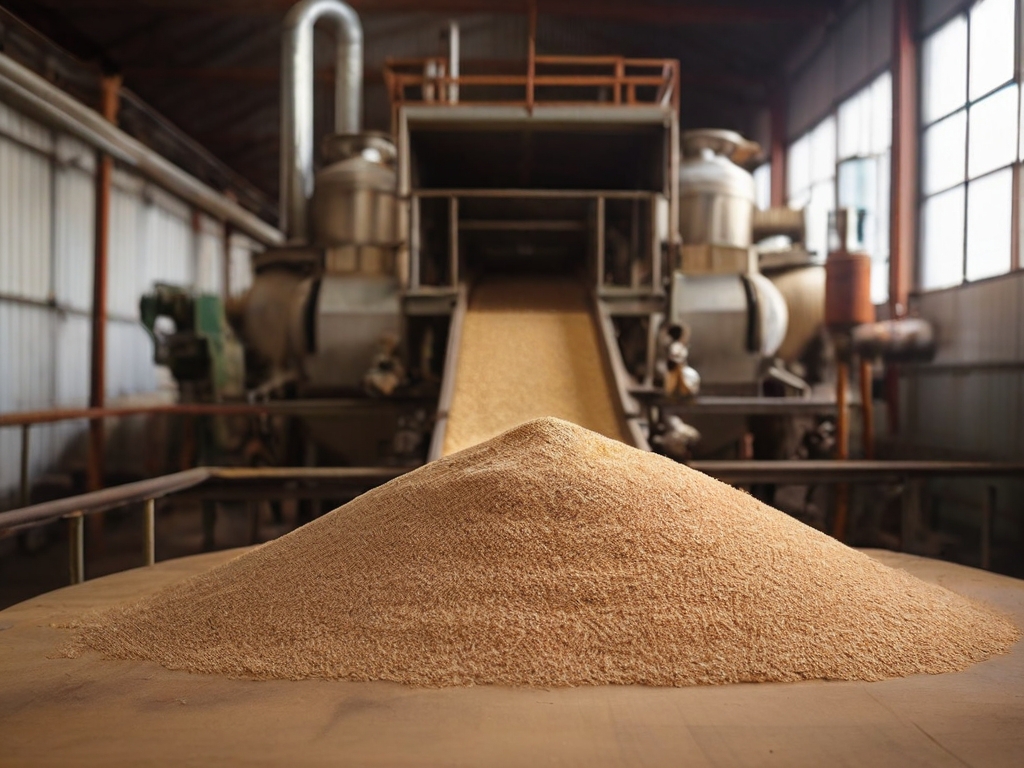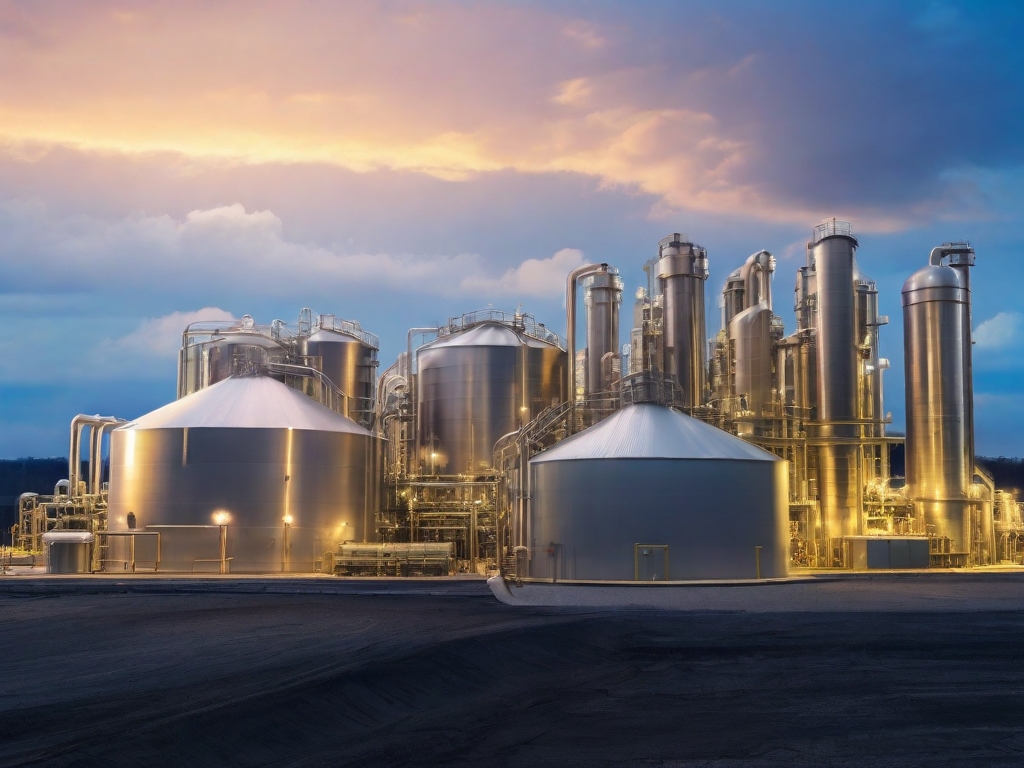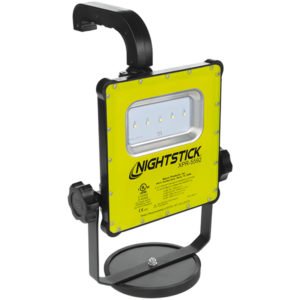Class 2 Division 1 Portable Lighting
Showing the single result
- Ensuring operational safety and compliance in hazardous environments with Class 2 Division 1 portable lighting is crucial for the oil and gas industry.
- The Intrinsically Safe Store provides rigorously tested and certified lighting solutions that adhere to the highest safety standards.
- Understanding hazardous location classifications, such as Class 2 Division 1, empowers industry professionals to select the appropriate lighting to prevent ignitions and ensure workplace safety.
Class 2 Division 1 Portable Lighting
Class 2 Division 1 Portable Lighting refers to lighting solutions designed specifically for use in areas where combustible dust is present under normal operating conditions. These environments, typical within various sectors of the oil and gas industry, demand rigorous safety standards to manage the risk of ignition and ensuing disasters. The classification itself is based on the National Electric Code (NEC), which outlines the requirements for electrical systems in these precarious environments.
The “Class 2” designation delineates the presence of combustible dust, such as grain, flour, or plastics dust, that can become explosive when suspended in the air and ignited. The “Division 1” refers to locations where these hazardous materials are present during normal operations, necessitating lighting fixtures that are sealed and designed to contain an explosion within the unit, or otherwise prevent an ignition source from coming into contact with the surrounding atmosphere.
In the pursuit of ensuring utmost operational safety, The Intrinsically Safe Store offers a comprehensive range of Class 2 Division 1 Portable Lighting, which adheres to the highest standards of safety and reliability. Each lighting solution in our inventory has been rigorously tested and certified to ensure that it meets or exceeds industry standards.
The use of Class 2 Division 1 Portable Lighting is critically important in hazardous areas for several reasons. Firstly, these lighting solutions provide the necessary illumination for workers to perform their tasks safely and efficiently, reducing the risk of accidents associated with poor visibility. Secondly, the robust design minimizes the risk of ignition from the lighting unit itself, thereby enhancing overall operational safety.
Portability is another key feature of these lights, as it allows for flexibility in moving the lighting to where it is needed most, improving operational efficiency. This portability, combined with their rugged build, enables these lights to withstand the harsh conditions often found in oil and gas industry environments, including extreme temperatures, vibrations, and impacts.
Overall, Class 2 Division 1 Portable Lighting is an essential element for maintaining a safe and efficient work environment in any hazardous location where combustible dust represents a potential risk. By integrating these lighting solutions into daily operations, oil and gas industry professionals can ensure a higher standard of safety and a continuity of operations even in the most challenging of circumstances.
Understanding Hazardous Locations: Where Class 2 Division 1 Lighting is Essential
Navigating hazardous locations safely is a primary concern in the oil and gas industry. The key to maintenance of safety and efficiency in such environments is the use of appropriate lighting solutions. As a specialist area, Class 2 Division 1 portable lighting is engineered to operate within the confines of spaces where ignitable concentrations of flammable gases, vapors, or liquids can exist under normal operation conditions.
 Class 2 Division 1 specifies the rating for lights that are suitable for use in areas that are typically characterized by the presence of combustible dust. This combustible dust can include materials like metal powders, wood, plastic, coal, flour, starch, grain, and other organic dust. These particles, when suspended in the air at sufficient concentrations and in the presence of an effective ignition source, can lead to combustion or an explosion.
Class 2 Division 1 specifies the rating for lights that are suitable for use in areas that are typically characterized by the presence of combustible dust. This combustible dust can include materials like metal powders, wood, plastic, coal, flour, starch, grain, and other organic dust. These particles, when suspended in the air at sufficient concentrations and in the presence of an effective ignition source, can lead to combustion or an explosion.
Such environments are common in the oil and gas industry, emphasizing the necessity of Class 2 Division 1 portable lighting solutions. For instance, these hazard-proof lighting options are crucial in locations like:
- Grain Silos and Bins: Areas where grain is handled and stored, creating clouds of potentially explosive dust.
- Coal Preparation Plants: Where fine coal dust is continuously produced and can easily become airborne.
- Woodworking Facilities: Workshops where sawdust and fine particles of wood are ubiquitous.
- Metalworking Shops and Foundries: Facilities where fine metallic powders can potentially ignite from sparks or hot surfaces.
Moreover, Class 2 Division 1 lighting is indispensable during the installation and maintenance phases of operations in these settings. Ensuring that workers have the light they need to perform their tasks without risking ignition of the explosive atmospheres around them is non-negotiable.
For professionals tasked with ensuring the safety of such operations, the Intrinsically Safe Store provides the necessary lighting solutions that are not only intrinsically safe but fit for purpose. Their products are designed with the harsh and potentially dangerous conditions of the oil and gas industry in mind, ensuring that they meet all regulatory standards and contribute to an enviably high safety record for the industry.
In summary, wherever hazardous conditions exist that involve combustible dust and possibly gases or vapors as well, Class 2 Division 1 portable lighting is not just recommended; it is essential for the safe and efficient execution of tasks. Understanding the various hazardous locations where this lighting is essential allows industry professionals to make informed decisions when selecting the appropriate lighting solutions for their specific needs.
Key Features of Class 2 Division 1 Portable Lighting Units
Class 2 Division 1 Portable Lighting plays a crucial role in the oil and gas industry by providing reliable illumination in areas where flammable gases, vapors, or finely pulverized dust may exist. When selecting such lighting units, certain features stand out as essential for safety, performance, and durability:
- Intrinsic Safety: The primary feature of these units is their intrinsically safe design, which ensures that any electrical sparks or thermal effects produced under normal or fault conditions are insufficient to cause ignition of a specific hazardous atmospheric mixture in its most easily ignitable concentration.
- Certification and Compliance: These lighting units are meticulously tested and certified to meet Class 2 Division 1 requirements. Such certification means they are approved for use in environments where combustible materials are present in the atmosphere under operations.
- Robust Construction: Given the harsh conditions in which they operate, these lighting units boast a rugged construction. They are made of durable materials that can withstand impacts, vibrations, and extreme temperatures, ensuring longevity and reliability in the field.
- Energy Efficiency: Embracing LED technology, many Class 2 Division 1 lighting units offer energy efficiency without compromising on brightness and visibility. This feature is not only cost-effective but also aligns with environmental sustainability initiatives.
- Bright and Clear Illumination: High-quality illumination is non-negotiable. These portable lights produce bright, clear light that improves visibility, reducing the risk of accidents and enhancing the ability to perform tasks accurately in hazardous areas.
- Portability: Designed for flexibility, these units are lightweight and come with ergonomic features such as handles and straps, making them easy to transport and position in various locations on the job site.
- Emergency Features: Some portable lights are equipped with emergency features such as backup power sources and signaling capabilities to ensure continuous operation and communication in case of primary power failure.
- Corrosion Resistance: Exposure to harsh chemicals and outdoor elements is common in the oil and gas industry, which is why Class 2 Division 1 Portable Lighting often features corrosion-resistant materials and coatings, extending their usability and maintenance cycles.
Each feature contributes significantly to the overall performance and safety of these portable lighting units, making them an indispensable tool for professionals operating in hazardous environments. The Intrinsically Safe Store prioritizes these key aspects when selecting products, ensuring that each solution offered meets the critical demands of the oil and gas industry.
Differences between Class 1 and Class 2 Portable Lighting
When navigating the complex classifications of portable lighting suitable for hazardous locations, it’s vital to understand the realm within which Class 1 and Class 2 distinctions operate. These classifications, as defined by the National Electric Code (NEC), are fundamentally about the nature of the hazardous materials present in the environment.
Class 1 Portable Lighting is designated for environments where flammable gases, vapors, and liquids are the primary hazards. These lights are built to withstand environments where the presence of elements like hydrocarbons, fuels, and solvents necessitate stringent safety measures to prevent ignition. In these areas, the precision engineering of lighting solutions is focused on preventing the ignition of these substances, which can lead to potentially catastrophic explosions.
On the other hand, Class 2 Portable Lighting is intended for locations where combustible dust is the main concern. These environments might be filled with fine particulate matter such as grain, flour, or chemical powders, which can become explosive under the right conditions. Lights falling under Class 2 Division 1 are specifically engineered to operate without igniting these dust particles, even in the case of a fixture failure or during regular maintenance.
The core difference lies in the nature of the explosive or flammable material in the environment and the protective measures lighting equipment must take to prevent ignition. Class 1 fixtures are often hermetically sealed and sometimes protected by explosion-proof enclosures, while Class 2 lights are designed to prevent the ingress of dust and to contain any internal explosion which may occur.
 For industry professionals, choosing the correct lighting classification is crucial for maintaining operational safety and adhering to regulatory compliance. Understanding the specific needs of an environment, whether it’s dominated by gases and vapors or by harmful dust, dictates the selection process for portable lighting solutions.
For industry professionals, choosing the correct lighting classification is crucial for maintaining operational safety and adhering to regulatory compliance. Understanding the specific needs of an environment, whether it’s dominated by gases and vapors or by harmful dust, dictates the selection process for portable lighting solutions.
For operations that involve a risk of both gases and dust, lighting equipment that meets both Class 1 and Class 2 Division 1 standards may be required. This combination ensures the highest level of safety and continues to underscore the critical nature of proper equipment classification in mitigating hazards in the workplace.
By navigating these classifications diligently, The Intrinsically Safe Store ensures that oil and gas industry professionals are always equipped with the appropriate portable lighting solutions, allowing them to maintain the safety and efficiency of operations, in alignment with our value proposition of being your single source for any Intrinsically Safe and Explosion Proof certified solutions.
Comparing Division 1 and Division 2 Lighting in Industrial Use
Understanding the critical differences between Division 1 and Division 2 lighting in industrial applications is essential for oil and gas industry professionals. Both types of lighting are designed to operate safely in hazardous environments, but they are suitable for different levels of risk.
Class 2, Division 1 portable lighting is designed to function in environments where ignitable concentrations of combustible dusts or ignitable fibers and flyings are present continuously or for long periods of time under normal operating conditions. These lights are constructed to contain any explosion originating within the device and to prevent sparks from within the device from igniting vapors, dust, or fibers in the air around them. This level of protection is necessary in areas such as grain elevators, sugar processing plants, or any facility where combustible particles are an integral part of the business operations.
On the other hand, Class 2, Division 2 lighting is intended for use in locations where hazardous concentrations of dust or fibers are not likely to exist under normal operating conditions. In these areas, the threat of an explosive atmosphere is present only accidentally – during unusual instances such as a container breach or system malfunction. Division 2 lighting solutions may not be built to withstand internal explosions in the same way that Division 1 fixtures are, but they still provide a significant degree of safety and protection.
It is vital for industry professionals to conduct a thorough hazard analysis to determine which classification of lighting is appropriate for their specific environment. Class 2, Division 1 portable lighting offers a higher level of protection and is essential in areas where the probability of hazardous conditions is greater.
When weighing the options between Division 1 and Division 2 lighting for industrial use, consider the nature and frequency of the hazardous atmosphere you are working with. In the oil and gas sector, where safety cannot be compromised, selecting the right lighting is critical for ensuring the well-being of personnel and the integrity of the work environment.
Utilizing lights that meet the stringent requirements of Class 2, Division 1, especially from a reputable provider like The Intrinsically Safe Store, guarantees compliance with safety regulations and provides peace of mind that operations can proceed safely, even in the most demanding of conditions.
FAQs on Class 2 Division 1 Portable Lighting
Why is Class 2 Division 1 lighting important?
Class 2 Division 1 lighting is essential for maintaining safety in hazardous areas where ignitable concentrations of combustible dust or ignitable fibers and flyings exist under normal operation conditions or where hazardous substances might be present due to mechanical failure or system malfunction. These lighting fixtures are designed to prevent the ignition of surrounding flammable materials in these environments.
Where is Class 2 Division 1 lighting commonly used?
Class 2 Division 1 lighting is commonly used in areas such as grain elevators, flour and feed mills, plants that manufacture, use or store magnesium or aluminum powders, producers of plastics, medicines, and fireworks, as well as other industries where combustible dusts are present. In the oil and gas industry, they can be critical in spaces where processing and handling of fine particulates occur regularly.
How is Class 2 Division 1 lighting rated?
Class 2 Division 1 lighting is rated by its ability to operate safely in specific hazardous environments. The rating refers to the light fixture’s design to ensure that it does not cause ignition of a flammable or combustible atmospheric mixture. The Underwriters Laboratories (UL) and other authoritative bodies certify these lights after rigorous testing to meet the standards for safety in hazardous locations.
What distinguishes Class 2 Division 1 lights from other classifications?
Class 2 Division 1 lights are distinguished from other classifications by their suitability for environments where explosive or ignitable substances are present during normal operations. Other classifications, like Class 1 Division 2 or Class 3 lighting, are for areas where hazardous conditions exist periodically or in the presence of different types of hazardous materials. The specific design, sealing, and construction materials of Class 2 Division 1 lights make them suitable for the most demanding environments with combustible dust.
Can Class 2 Division 1 lights be used in wet conditions?
Yes, many Class 2 Division 1 lights are designed to be used in wet conditions and will be rated for this purpose. They typically carry additional ratings like IP66 or IP67, which indicate their degree of protection against ingress of dust and water. This makes them suitable for use indoors and outdoors, where they may be exposed to rain, sleet, snow, or washing processes. However, it is important to check the specific ratings and certifications of the lighting fixtures to ensure their appropriateness for a given wet environment.


























